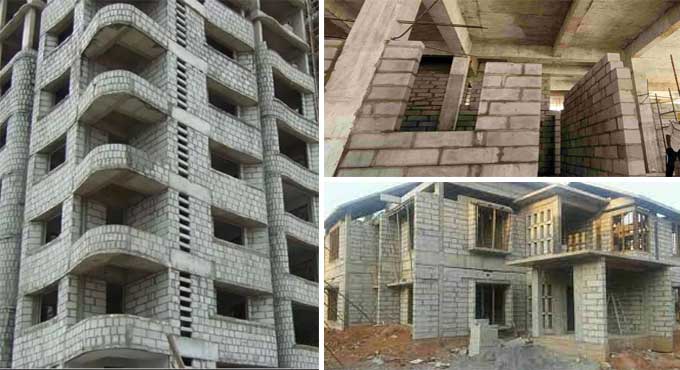
Everything you need to know about the AAC Block
Traditional bricks are quickly being replaced in the building sector with AAC blocks, also known as autoclaved aerated concrete blocks. AAC is extremely easy to handle and work with due to its three times lighter weight than normal bricks.
There is no need to be surprised to learn that AACs are not a new concept in the industry. The 1920s may have seen the invention of this substance. Nonetheless, it has just recently gained enormous appeal. If you are building a house, you should definitely think about using AAC blocks rather than red bricks.
AAC Blocks
AAC blocks are lightweight because of their porous, foam-like textures, which does not imply that a special substance was utilized to produce them.
Cement, water, sand, and lime are a few of the components utilized to construct an AAC building. Also, a tiny amount of raising agent is applied, which aids in creating the porous structure.
Burnt clay bricks and AAC blocks are produced differently and employ different ingredients. An autoclave is a device that may be configured to produce superheated steam at high pressures and temperatures. To make the AAC block construction lightweight and durable, it is autoclaved.
How are they created?
As the AAC is mixed and cast, other additives are added to improve the qualities of the AAC blocks. Calcium hydroxide and aluminum powder are combined, and the mixture releases water and hydrogen gas.
The porous, foam-like structure that is produced at the end is mostly due to the frothing up of this gas. The completed construction is up to three times lighter than a typical cement block because the gas rises to a height of 3mm inside the mixture.
In the autoclave chamber, the mixed slurry solidifies over a period of ten to twelve hours. The AAC is also known as autoclaved, porous, cellular, or discrete concrete.
Features of AAC Blocks
Some of the features of AAC blocks include:
- Traditional concrete blocks are much heavier than AAC blocks, which makes them simpler to carry, handle, and install.
- AAC blocks offer great compressive strength despite being relatively light, making them appropriate for load-bearing applications.
- AAC blocks have superior thermal insulation capabilities compared to conventional concrete blocks. They assist in keeping the building warm in the winter and cool in the summer, saving on electricity.
- AAC blocks can endure high temperatures for an extended period of time and have strong fire resistance.
- Compared to conventional concrete blocks, AAC blocks offer superior sound insulation, which lessens noise transfer between rooms and floors.
- AAC blocks are created with less waste and are constructed of natural, non-toxic materials. They are an environmentally beneficial choice because they can be recycled.
- Because of their minimal water absorption, AAC blocks are more durable and less likely to sustain moisture damage.
Benefits of AAC Blocks
These blocks have gained popularity in recent years due to their various benefits, including:
- AAC blocks are less expensive to transport since they are lighter than conventional bricks, which also makes them simpler to handle.
- Since AAC blocks have a high thermal insulation value, less energy is needed to heat or cool a structure, which results in cheaper energy costs.
- AAC blocks are a safer alternative for building since they can sustain temperatures of up to 1600?C and are fire-resistant.
- The sound insulation qualities of AAC blocks help to lessen noise pollution within buildings.
- AAC blocks are an ecologically beneficial option since they are built of natural resources and have a minimal carbon impact.
- The lightweight nature of AAC blocks, as well as their ease of installation, makes them a cost-effective choice in the long run.
- Compared to traditional bricks, AAC blocks last longer and don't deteriorate over time.
Drawbacks of AAC Blocks
The drawbacks of AAC bricks are as mentioned below:-
- AAC blocks must be handled cautiously while loading and unloading because to their porous nature. Also, given their small weight, laborers could handle them carelessly, leading to unintended breakage.
- According to the amount you order, AAC block costs change. When compared to typical bricks, the overall cost of bricks may be expensive if you are creating a low-rise, tiny structure. They work well in high-rise structures.
- As AAC blocks are unable to carry heavy weights, they are referred to as non-load-bearing materials. As a result, their principal function should be as partition walls.
Wrapping it up
Consider employing AAC blocks totally or partially for construction if you are already building your home or a company setting. Among the benefits of these blocks are the fact that they can be used to build long-lasting constructions.
To get more details, watch the following video tutorial.
Video Source: Civil Engineer Deepak Kumar


